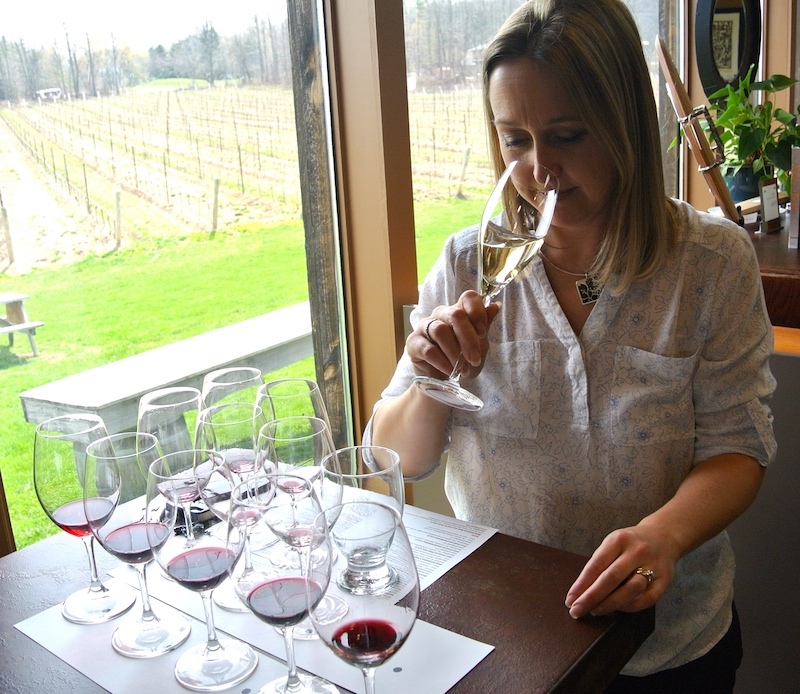
By Rick VanSickle
It is as frustrating as it is perplexing; the dismissive shrug and glassy-eyed stare you get when pulling out a bottle of top-notch Niagara Riesling for friends.
It is Niagara’s greatest gift to the wine world, the genuine essence of the soil from which it is grown and such a pure and unadulterated example of what terroir is all about, especially in single-vineyard expressions in key sub-appellations. Yet, Riesling appears to be flat lining* — its growth stunted and passed over by the much more popular kids on the block, yeah, you know, the rosés (this year) and sparkling wines (last year) and whatever shiny new thing is shimmering on the horizon next year.
Riesling, quite frankly, is doomed to forever be the unpopular kid, slapped with the “different” tag and found mostly in the far corner of the room all alone and sad-faced.
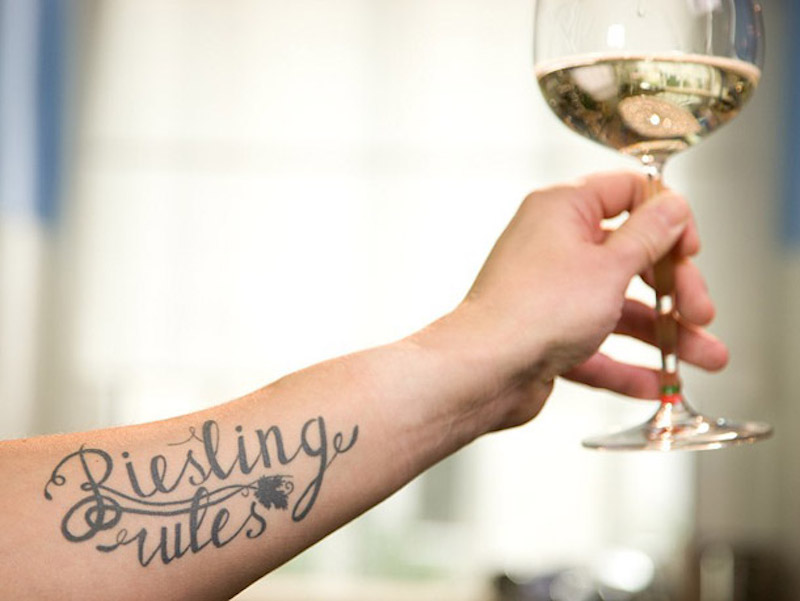
Which is a damn shame. Because no matter how many times Riesling is passed over for the the NEXT BIG THING it will always be the one grape that is constant and true — an unwavering beacon for everything that is pure and beautiful in Niagara’s vineyards from the benches to the lake.
There is little fight left in Riesling supporters, they have mouth-balled their “If You Don’t Like Riesling You’re a F—ing Idiot” T-shirts and retreated to the ever-shrinking and more exclusive Club Riesling that shows no signs of attracting new blood any time soon.
People have simply moved on.
“As a focus of the industry, it’s just not there,” laments Emma Garner, winemaker at the Riesling-centric Thirty Bench Wine Makers on the Beamsville Bench (and recently appointed senior winemaker for all of the Peller family’s VQA wines in Ontario).
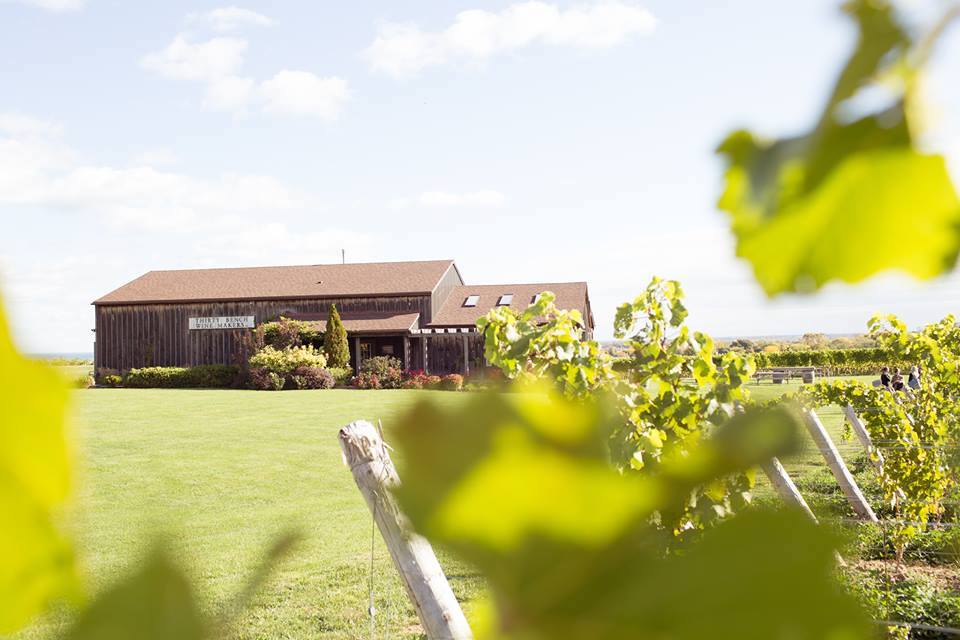
Garner has seen Riesling grow rapidly at Thirty Bench from 48,000 litres to 72,000 litres in a few short years. But it has retreated back to 50,000 litres more recently. Mind you, the growth came in the popular Thirty Bench Winemaker’s Blend during the boom times while the three estate single-vineyard Rieslings — Triangle, Wood Post and Steel Post — have remained pretty steady and coveted by true Riesling fans under the magical spell of this magnificent grape.
In fact, even more Riesling in the key vineyards has been planted to increase the amount of grapes the estate has to draw on.
Garner, pictured below and in the very top photo, does not worry about the current trend; she is saddened by it somewhat, but not alarmed. It is in the single-vineyard wines where the excitement is for the winemaker and those wines have not shown any downturn in popularity.
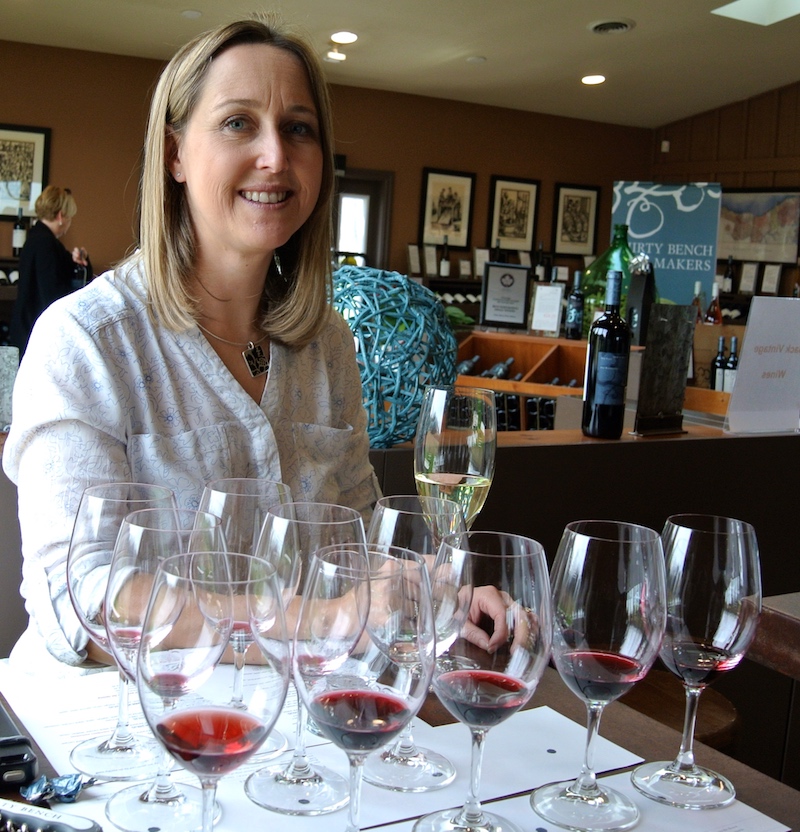
“For us it’s not that concerning,” she says. “We want to get back to that scarcity.”
Part of the problem for Riesling is (and always has been) “people just don’t know what they are going to get.” Is it sweet or is it dry? That is the dilemma with seemingly no solution in sight, and not particular to Niagara. Riesling is inherently sweet by the numbers but can feel very dry on the palate because of Niagara’s racy acidity. But every single winery is different in their approach to actual and perceived sweetness.
Perhaps that is why Riesling, considered one of the four signature grapes in Niagara, along with Cabernet Franc, Chardonnay and Pinot Noir, will never have its own weekend celebration like Chardonnay has i4c. Riesling lovers will just have to live with that.
I sat down with Garner recently to taste through the extensive Riesling portfolio at Thirty Bench along with the rest of the top-drawer portfolio. Here is what I can recommend. Note: All wines available at the winery.
The Rieslings
Thirty Bench is known for its Rieslings and is one of the Top Five producers of this wonderful grape in Niagara (in my opinion). The hallmark of the top Rieslings made there has always been the profound minerality from the Beamsville Bench terroir and the differences between the three single-vineyard wines crafted each vintage. The estate also makes a sparkling Riesling and a more general estate and Beamsville Bench sourced Riesling.
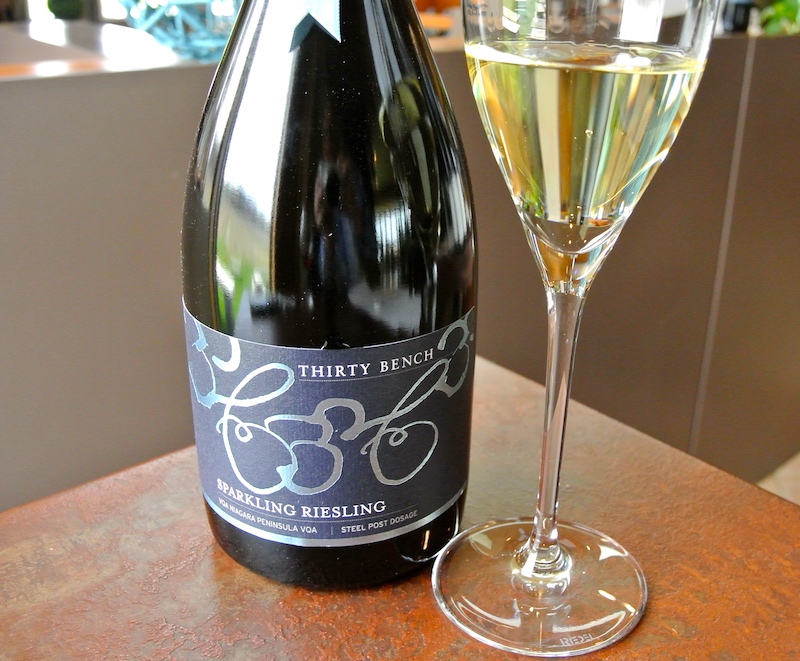
Thirty Bench Wine Makers Sparkling Riesling NV ($39, 89 points) — This is a traditionally-made, non vintage sparkler that’s primarily constructed from the 2014 harvest and back sweetened slightly from a dosage of the 2010 Steel Post Riesling. Soft, persistent bubbles lead to an expressive nose of green apple, lime, grapefruit and toasty/leesy/mineral accents. All that citrus, apple and peach fruit on the palate is lifted by electrified acidity and leads to a fresh and vibrant finish.
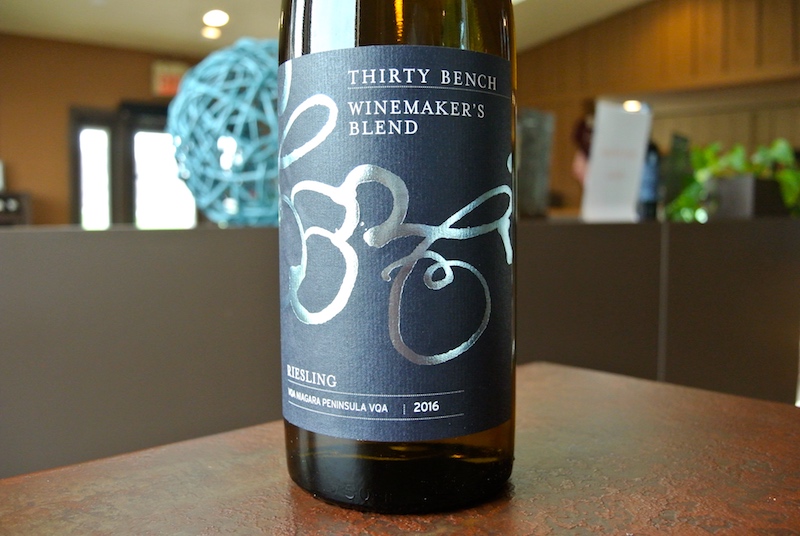
Thirty Bench Winemaker’s Blend Riesling 2016 ($20, LCBO, 88 points) — For sure, all the top fruit from the estate is destined for the three single-vineyard wines but the rest, plus grapes from the second vintage Muckle Block on the property, go into this well-made and value priced wine. Garner will also source top Beamsville Bench Riesling to add to the blend if she needs to. It shows lovely minerals, lime and white flower aromas on the nose. The fruit is softer, rounder, than previous vintages (due to the warm vintage), which gives the wine a more voluptuous feel on the palate to go with ripe stone fruit, citrus, tangerine all punctuated by that lovely Beamsville Bench minerality.
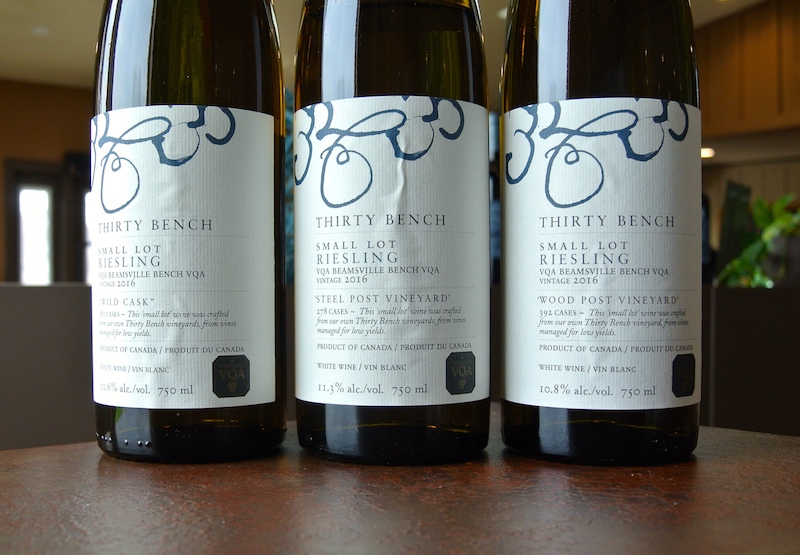
Thirty Bench Small Lot Steel Post Vineyard Riesling 2016 ($30, 91 points) — It still amazes me that the three blocks within Thirty Bench’s estate plantings that make up the trilogy of Rieslings in the top tier are so different from one another. There isn’t a whole lot of distance between the three parcels of Steel Post, Wood Post and Triangle, but they all show such different aromatics and flavours. The Steel Post in the warm 2016 vintage is more overt, with rich peach, apple, lemon and minerals. With only 10 g/l of residual sugar, you would think it would feel nearly bone dry on the palate, yet it does have some wild honey notes to go with peach pith, soft lemon, lime, flinty minerality and apple that’s made in a richer style but with enough acidity to keep it lively through the finish.
Thirty Bench Small Lot Wood Post Vineyard Riesling 2016 ($30, 92 points) — Riesling generally performs better in vintages where the weather seems at its worst. Wet? Cool? Both perfect conditions for this tough cool-climate grape. But it is still a treat to see it made in a warmer vintage, which gives it a much more robust and less subtle profile. The aromas on this Wood Post jump from the glass – apples, honeyed peaches, lime and overt notes of minerality. It is layered and textured on the palate and shows ripe fruits, more sweetness than the Steel Post, minerals and enough citrus accents on the finish to keep it lively. Wood Post has been known to last a fairly long time in the cellar and continue to evolve, but I would recommend less time for this riper version.
Thirty Bench Small Lot Wild Cask Riesling 2016 ($30, 93 points) – Garner started the “wild cask” thing with the 2013 vintage after being inspired by a visit to the Mosel in Germany. This version of the Riesling is from Triangle Vineyard and is wild fermented in 500-litre neutral oak puncheons. The goal is for lower alcohol and higher acidity while leaving greater residual sugars (23 brix). “The wild ferment brings texture on the palate and fresh, bright acidity,” says Garner. There is a beautiful floral note on the nose that leads to quince, lime, peach, honey-dipped peach and subtle ginger and lime. More river-rock minerality and a lovely texture on the palate work well with the range of white flowers, succulent peach, grapefruit, lime-ginger and wild honey notes that all benefit from freshening acidity on the finish. Sensational Riesling that should reward with 5+ years in the cellar.
The Rosé
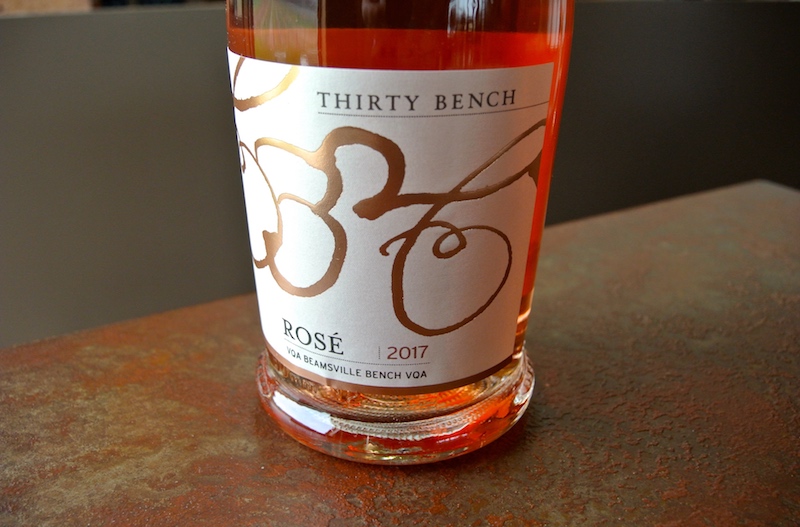
Thirty Bench Small Lot Rosé 2017 ($23, 88 points) — The 2017 version of this rosé is a blend of Pinot Noir, Pinot Meunier, Merlot and Cabernet Franc, so be prepared for a slightly darker, richer and more forward sip than the current trend. The nose shows bright cherries, raspberries, cassis and rhubarb notes. It shows a bolder style on the palate with ripe red fruits, a touch of currants and blackberries with tingly acidity on the finish.
The Reds
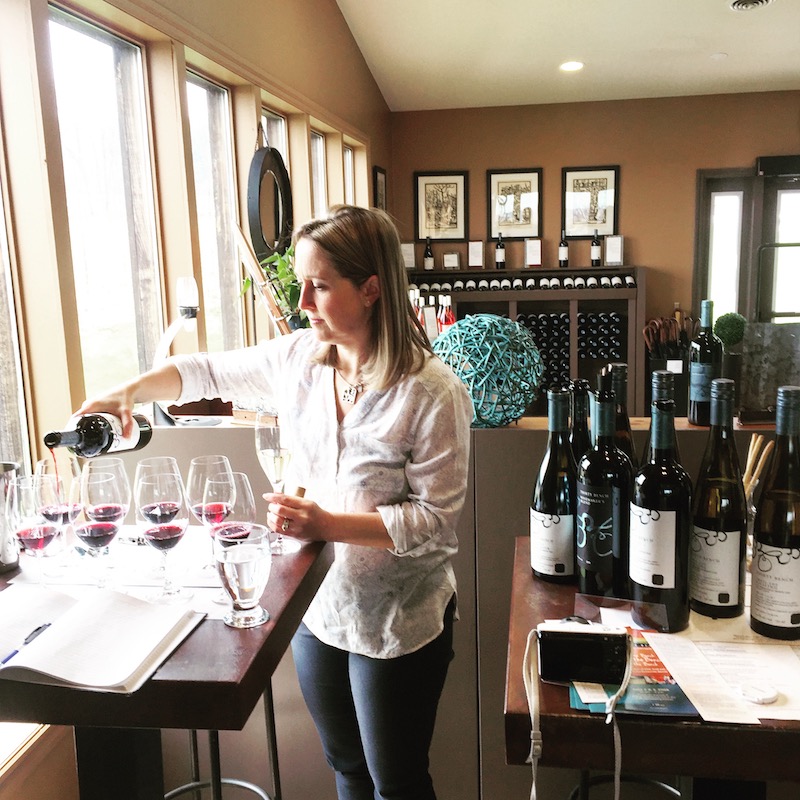
Thirty Bench Small Lot Pinot Noir 2015 ($37, 91 points) — Yes, Thirty Bench enjoys estate Pinot Noir on the Beamsville Bench from 20-year-old vines, says Garner, but “we’re really just beginning to understand Pinot here.” The nose on this beauty shows brazen red fruits, cassis, earth, nutmeg spice and a certain earthy/mineral foundation. The cran-cherry and raspberry fruits are joined by savoury dark fruits, rich spice notes, grippy tannins and vibrant acidity through the finish. Cellar to allow tannins to integrate and acidity to soften for maximum benefit.
Thirty Bench Winemaker’s Blend 2015 ($24, 88 points) — A blend of Cabernet Sauvignon, Cabernet Franc and Merlot with a nose of blackberries, cherries, earthy/loamy bits, black currants, spice and cocoa. It has fairly good tannic structure but certainly approachable now with a range of dark fruits, spice, cherry accents and decent acidity through the finish.
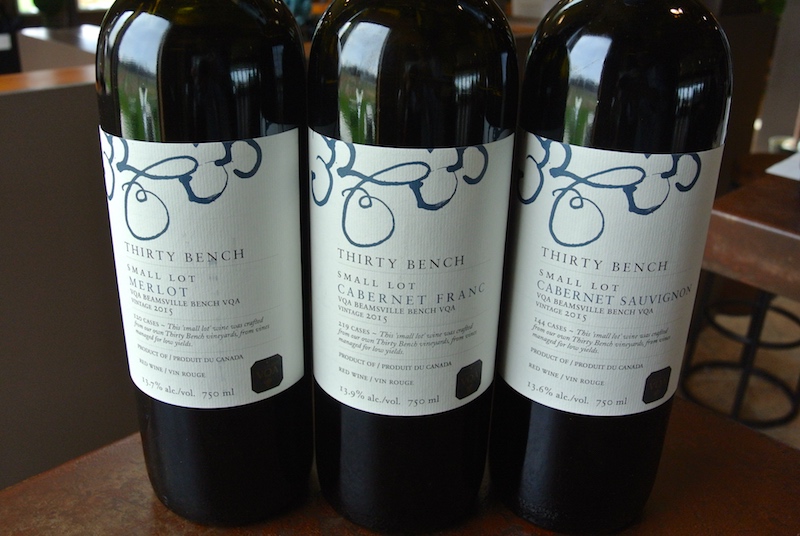
Thirty Bench Small Lot Merlot 2015 ($49, 91 points) — This Merlot has a gorgeous nose of bright cherry, plum, cassis, oak spices and a subtle underlying herbaceous nuance. It has structure on the palate with fine-grained tannins and is tightly wound at the moment. Let it open up and the range of red and dark fruits emerge against a background of elegant spice, earth and dark chocolate notes. Cellar 5+ years.
Thirty Bench Small Lot Cabernet Franc 2015 ($49, 91 points) — A rollicking nose of cherry, raspberry, plum, currant, graphite and rich barrel spice notes with just a hint of bramble and herbs. This is a highly structured Franc and tight, but does open up to a full complement of red and dark fruits, anise/licorice accents, gobs of puckering tannins and vibrant acidity through the finish. Cellar 5+ years.
Thirty Bench Small Lot Cabernet Sauvignon 2015 ($49, 92 points) — Making Cabernet Sauvignon as a single variety wine in Niagara is just not easy to do. It struggles to ripen in even the warmest vintages and even if does, the tannins can be overwhelming for those without the patience to wait for them to soften. But even though 2015 was not what one would considered a warm vintage, Garner has crafted a pretty Cabernet Sauvignon with ripe blackberries, cherries, raspberry bramble, leather and spice notes on the nose. It does have tannic structure, but not overbearing, with lovely red and dark fruits, elegant spice notes and already well on its way to being perfectly integrated. A great job here for lovers of Cab Sauv. Cellar 3+ years, but can be enjoyed now with red meat.
* That “flat lining” comment above is anecdotal on my part and not based on data that I could find. Because crop reports are affected more by weather than grape popularity in the short term, there are no hard numbers for Riesling’s rise or decline. Plus, there will always be a place to put Riesling; whatever wineries don’t want in their single-variety versions can always be pushed over to the “house white blend” or sparkling wines. My impressions are based on my own observations and talking to winemakers.


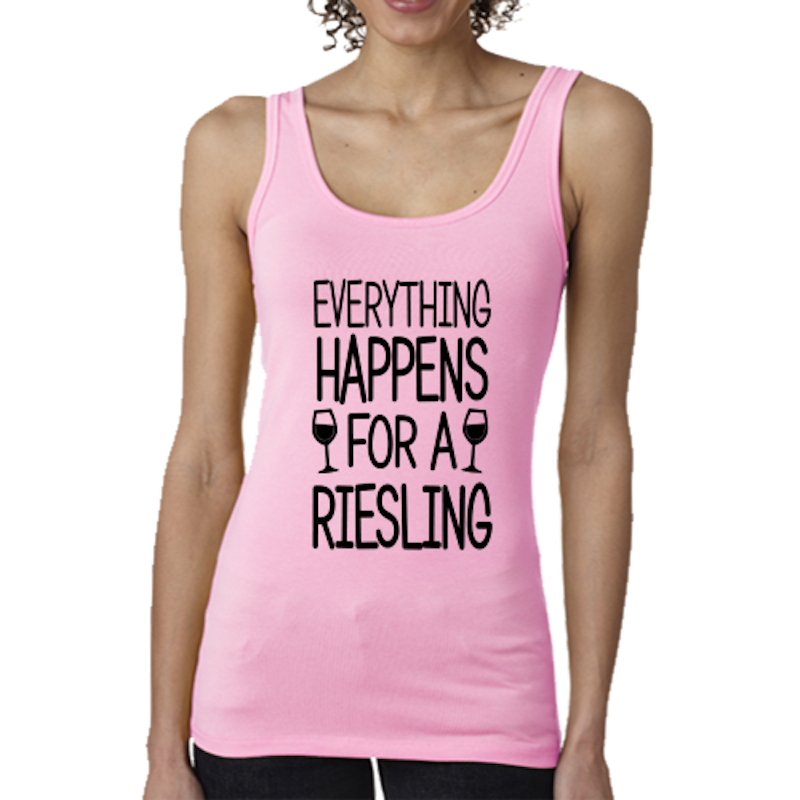




Comment here